Museums today:
The art of display has evolved to the extent that museums stand as massive pieces of display themselves. Architects wish to depict a story through these museum spaces. They wish to guide the user systematically in a way that they understand the concept better. The Mercedes Benz museum in Stuttgart, Germany is one such example. Designed by UNStudio under the guidance of Architect Ben Van Berkel, the museum is located in the hometown of Mercedes, Stuttgart, and crafted to showcase the legacy of Mercedes Benz and how the brand has managed to grow over time.
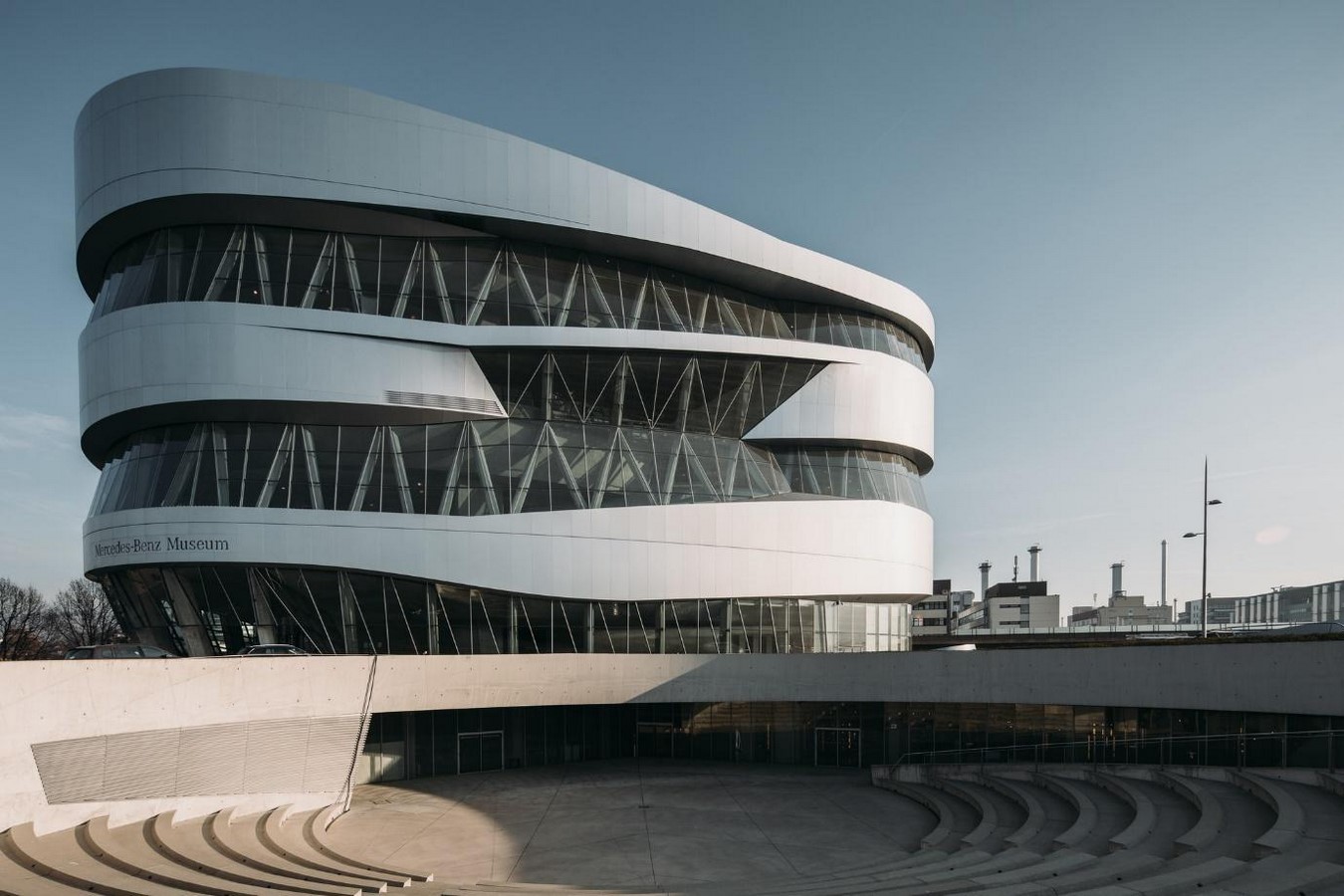
The Concept:
The Mercedes Benz brand has developed enormously over the past few years. It has a deep history, important people, important developments, and stories to share with the visitors. Keeping this long-lasting legacy in mind and the brand that is ahead of its time, the architect has segregated the design into 3 major zones. The zones are named, The Myth, The Void, and The Collection. Each zone is interconnected to the other on different floor levels. These connections are named ‘The Twist’. These interconnections also act as load-bearing structures that span exhibition spaces that are more than 100 feet wide.
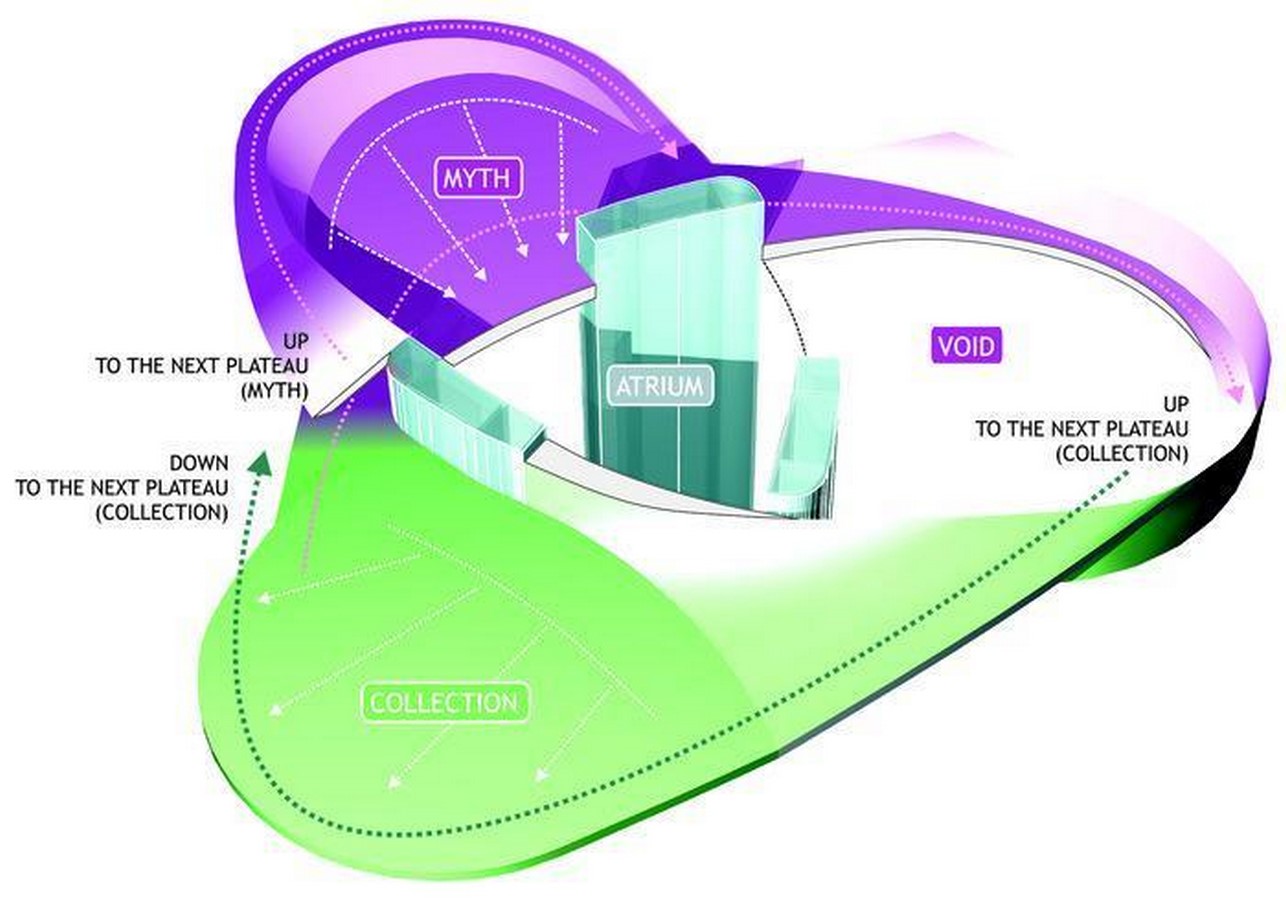
The form which is inspired by a clover leaf, is a combination of 3 intersecting circles which get connected on different levels at the junctions. The circles naturally form a triangular space in the center. This zone is used as an atrium that would bind the museum together and hence, it is termed, ‘The Void’. ‘The Void’ would guide you to the remaining two sections of the museum through ‘The Twist’.
The Challenge:
UNStudio was challenged to design a Museum that would act as a cultural center for Mercedes Benz. A structure that would connect the past and future of the brand. UNStudio countered this challenge by using traditional design concepts that would blend with modern construction technologies to craft a structure that stands as an embodiment of Mercedes Benz itself. To design around 16500 sq.m of construction in an area of around 4800 sq.m, the architects created multiple levels to the museum which were interwoven with the help of ramps. To bring all these elements together in a short time frame, the architects resorted to the use of a single digital model that allows seamless coordination and quick updates in case of changes in design.
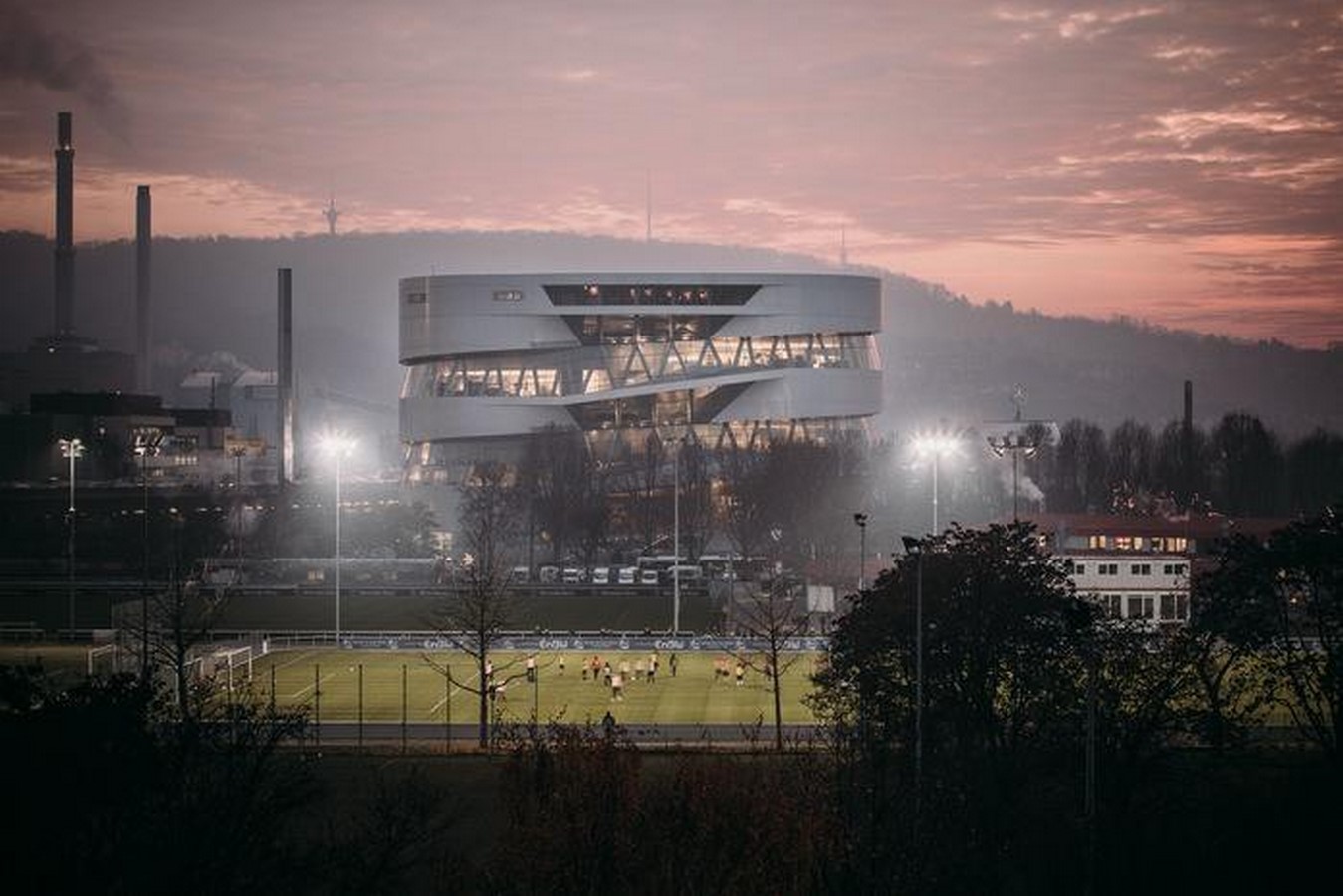
The Design:
The Mercedes Benz Museum was designed in 2001 using a rough concept depicted with the help of multiple sketches. These sketches formed the foundation of a complex network for user circulation and experience. The double helix forms were broadly segregated into zones, one of which would display the history and background of the brand, and the other presenting an enormous collection of automobiles and engines designed by Mercedes. To maintain the initial concept and design forms, various new technologies like the ‘Tornado’ Smoke elimination system, a system where smoke is sucked from the open exhibition spaces and thrown out using multiple nozzles placed atop the building, ‘The Twist’ which acts as an interconnecting space, where the structural member is twisted uniquely such that it forms connecting ramps on its top surface and also helps to span huge exhibition spaces.
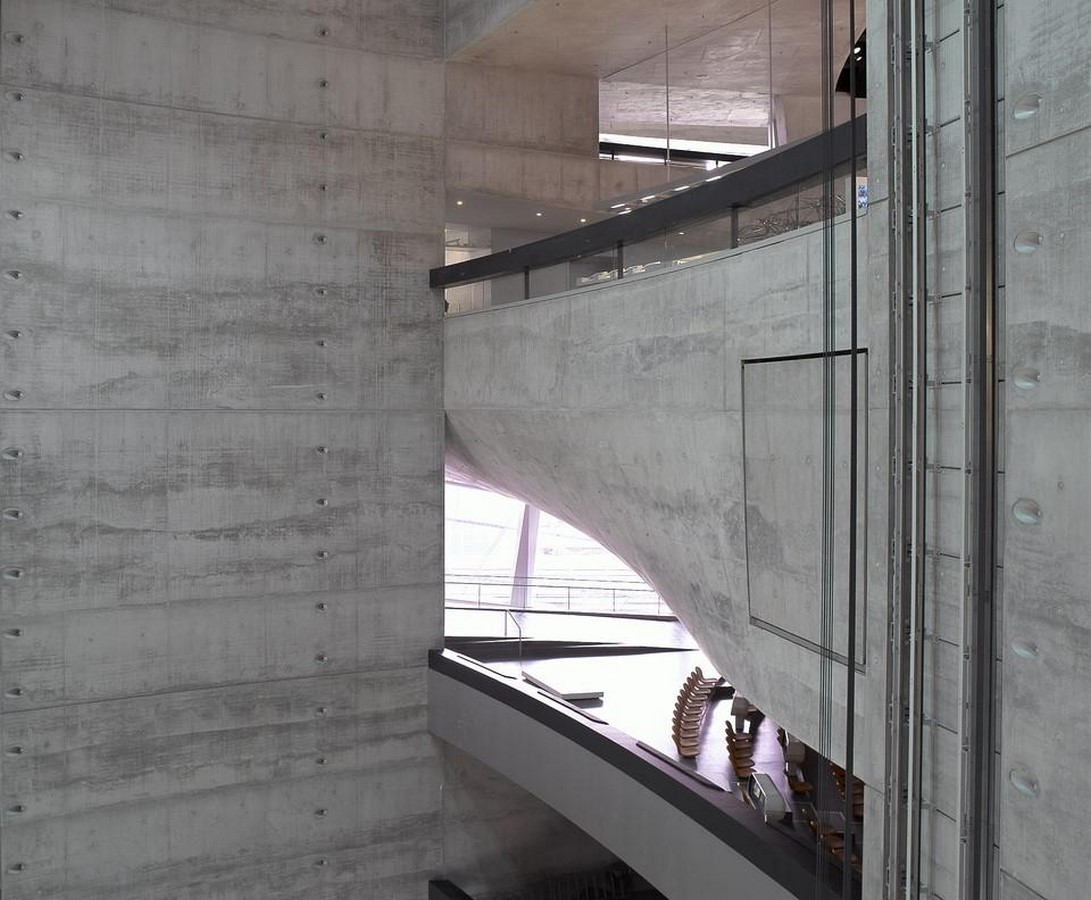
These introductions give a unique identity to the museum while also helping to maintain the execution of the concept. The design houses a massive car and engine collection, informative spaces, interactive spaces, restaurants, and eatery areas to provide a seamless user experience. The museum completed in 2006 still manages to stand as a cultural gateway to the nearby Mercedes Benz factory. Making use of modern construction materials like steel, concrete, and glass, the museum maintains a raw brutalist look which helps to highlight the exhibits even more.
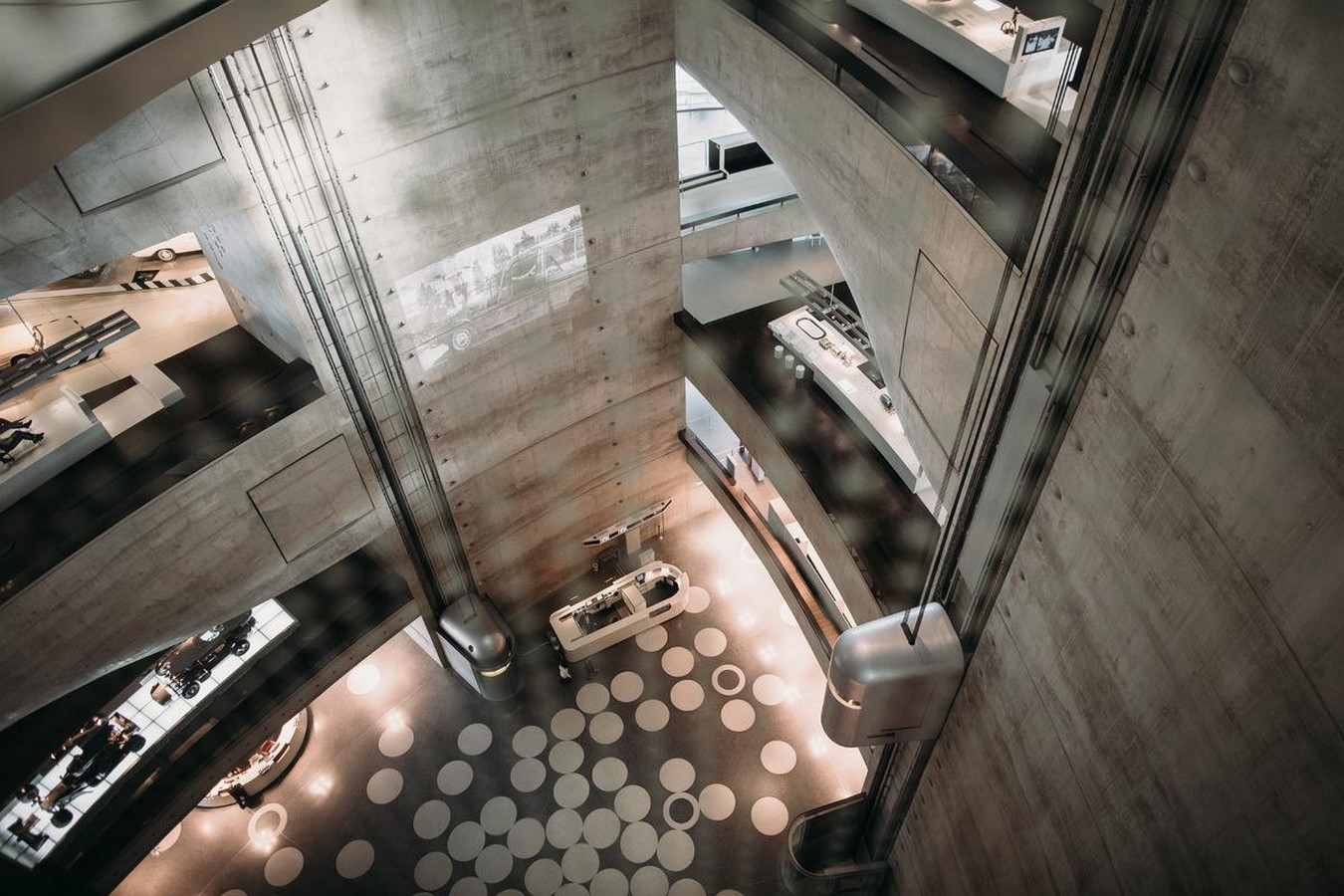
A string to the future:
The Mercedes Benz museum stands as a magnificent example of a form that follows the function. The structure is designed to maximize space utilization in a confined plot. The museum has made use of modern design and structural technologies only where it was necessary, otherwise, the designers have stuck to traditional forms of construction. The museum manages to give a glimpse of how museums will function in the future, and what kind of technologies can be used to provide more character to the design.
The designers have done a commendable job of providing a unique identity to the museum along with carrying the weight to represent a massive brand like Mercedes Benz. However, it would have been interesting to see how the UNStudio could have experimented a bit more with the façade instead of sticking to the traditional glass and steel form. The Mercedes Benz museum meanwhile, manages to please the users in terms of planning, seamless inter-connectivity, and storytelling sections to date as the focus shifts from the structure to the exhibit. The museum definitely provides a gateway for architects to experiment with forms and technologies used in public spaces in the future.

References:
- UNStudio- Mercedes-Benz Museum. Stuttgart, Germany, 2001-2006. https://www.unstudio.com/en/page/12482/mercedes-benz-museum
- Mercedes-Benz Group- The Mercedes-Benz Museum. https://group.mercedes-benz.com/company/tradition/museums-historical-sites/mercedes-benz-museum.html
- Archdaily- Mercedes-Benz Museum / UNStudio. https://www.archdaily.com/805982/mercedes-benz-museum-unstudio

















